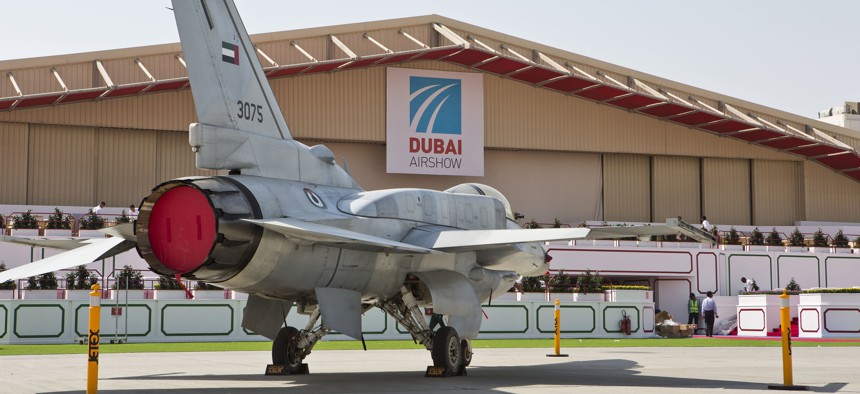
The UAE Block 60 F-16 stands strong out in front of the Dubai Airshow hanger. Lockheed Martin
Will COVID-Stressed Countries Slow Their Arms Buys?
State Department’s political-military leader sees mixed signals from abroad.
The coronavirus pandemic might prompt U.S. allies to restructure arms deals for American-made weapons, a top State Department official.
But R. Clarke Cooper, assistant secretary of state for political-military affairs, said there is still an appetite for U.S. weapons overseas — especially F-16 fighter jets and Patriot missile batteries.
“If we're looking at long-term modernization plans across the board, we're seeing what I would say is [a] steady state in that place,” Cooper said Wednesday during a virtual Defense Writers Group meeting.
Since April, the State Department has approved more than four dozen foreign arms deals with a potential total value of more than $91 billion. But just because the sales were approved doesn’t mean they’ll come to fruition. In some cases, U.S. companies are competing against one another and/or overseas firms for contracts.
“On big-ticket modernization, while some states...may have looked to re-frame or push right to a later date particular procurements, we've not seen dramatic changes in their planning,” he said. “What it may mean is how they sequence certain procurements.”
Germany last month canceled a multibillion- dollar helicopter competition between Boeing and Lockheed Martin, calling the project too expensive. At the same time, Switzerland recently moved forward with a competition to replace its F/A-18 Hornets.
But economic pressures could prompt some countries to adjust payments schedules, Cooper said.
“Based on their national budgets, [countries] might seek some sort of dependable undertaking,” he said. “Some states might seek foreign military financing or grant assistance.”
By the way, Cooper added, the economic downturns could result in more NATO allies meeting the alliance’s goal of members spending 2 percent of their gross domestic product on defense.
“Bizarrely, we may have some states where their numbers look like they've had an increase [in defense spending] because they've had a drop in GDP,” he said.




